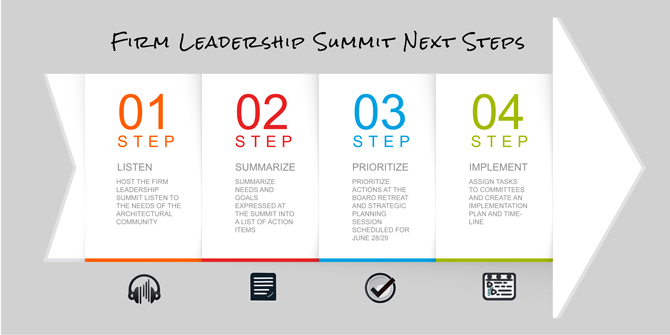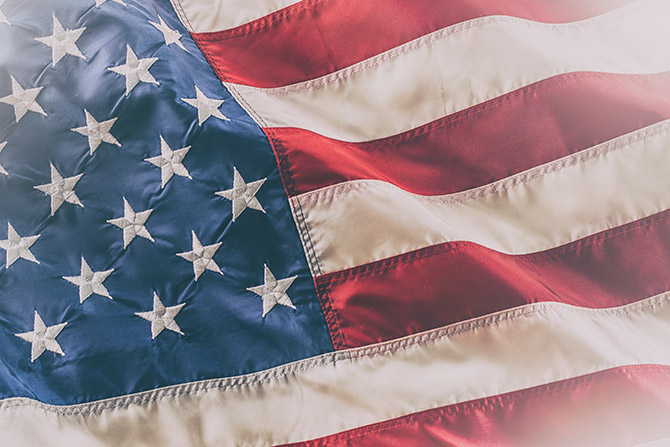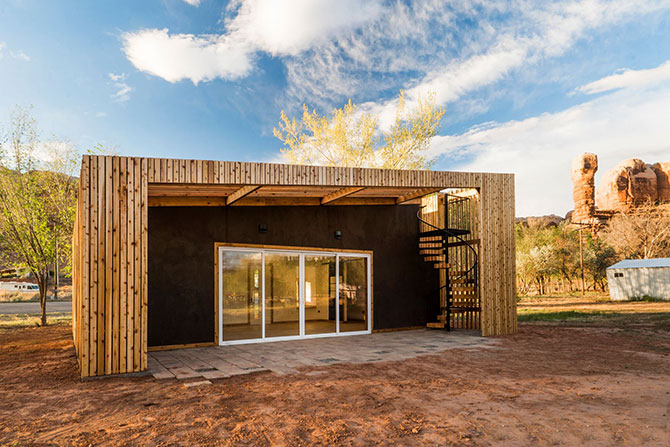AIA Utah is a member-driven organization. As such, we must engage with our members to better understand the needs, challenges, and opportunities for AIA Utah to support both architects and our profession.
When I ran for president-elect of AIA Utah, I set a goal to amplify our members’ voices, which begins with listening.
AIA Utah hosted a firm Leadership Summit for the first time in March. We invited firm leaders to attend a day-long discussion to identify and prioritize needs for AIA Utah within our state and profession. We were delighted to have representatives from 16 large and small firms attend the event.
Using feedback from our registrants, the priority topics for the event were focused on how AIA Utah can enhance the value of architects (and architecture) to our clients and our communities and how AIA Utah can better support architectural candidates and young architects within the profession.
Discussion Part 1
The first series of questions focused on our perception of the value of hiring an architect and the services architects provide. A series of round-table discussions occurred around the following questions:
- What is your perception of the value of architects?
- What is the value your clients see in your services?
- What would you like your clients to know about the architectural process?
- What do you think our clients wish we knew to support a more effective design process?
- How can AIA Utah support you by advocating for architects in Utah?
From these robust and varied discussions, we learned that AIA Utah can support our architectural community by providing a toolkit for owners to help describe the design process, provide a dictionary of common architectural terms, and answer FAQs.
We also heard that AIA Utah could better represent our members by supporting more outreach to owners and owner representatives on behalf of the profession. Discussions with institutional owners, contractors, and developers to share the value of architects and good architecture in our communities are key steps. Now, we must determine the best way to approach these discussions, engage with our owners and begin this connection.
The next series of discussions focused on how we can support both architects and owners in supporting effective design while meeting project schedules and budgets and creating a more compelling value proposition for the role of architects and the impact of effective architecture.
We concluded this section with a robust discussion focused on the value of architects as leaders in our community. AIA Utah can and should help support our architect members who lead impactful organizations, engage with public policy, and hold elected and appointed positions across the state. These architects have a tremendous opportunity to shape our communities and support the profession.
Discussion Part 2
The second part of the day was focused on the skill sets needed to be a successful architect and how AIA Utah can support our members in building these skills. The specific questions for this portion of the event were:
- What experience or skills do you wish you had when you started working in architecture?
- What experience or knowledge do you wish employees had to support the practice of architecture?
- How can AIA Utah support firms and architects in these areas?
From these round table discussions came a range of ideas for how AIA Utah can provide meaningful opportunities to expand our professional skill sets, including:
- Focus learning opportunities on strategies for improving communication skills.
- Advocate for and provide additional mentorship opportunities.
- Increase engagement between AIA Utah and the architecture schools at University of Utah and Utah Valley University.
- Enhance opportunities to share emerging ideas and technologies and support the profession’s evolution.
We wrapped up this discussion, summarizing priorities for AIA Utah that will support our profession. The ideas coalescing from this discussion included the need to better connect AIA members with AIA tools and resources:
- Create a community engagement strategy to promote architecture across the state.
- Support the center for architecture in efforts to memorialize the valuable works of architects and architecture in Utah, and;
- Connect the general public with architects and works of architecture.
At the event’s culmination, both the attendees and AIA Utah staff and board felt reconnected and invigorated. We understand there is work ahead of us, but we have a great team ready to lead the charge. Our board is excited to take the goals and strategies from these discussions to our summer retreat and identify implementation plans and timelines associated with the goals.
I am incredibly grateful for the time, thoughtful discussions, and clear direction provided by the attendees. I also want to take a moment to thank Fran Pruyn, our moderator, and the AIA Utah board members who could attend and engage in the event. We all felt it was an incredible opportunity for AIA Utah leaders to hear from firm leaders and collectively find ways to lift our profession.









